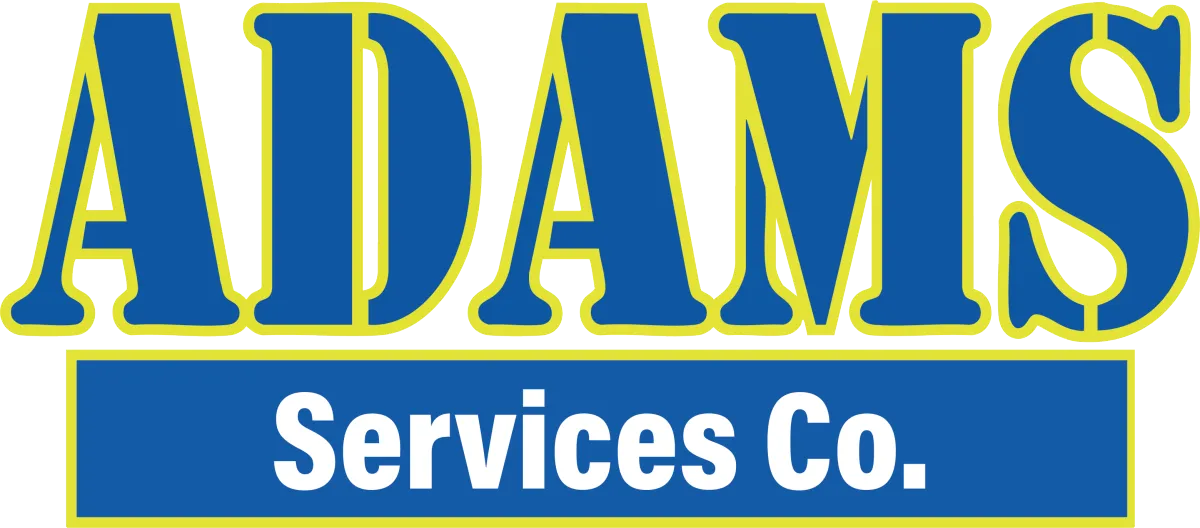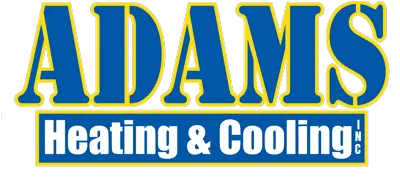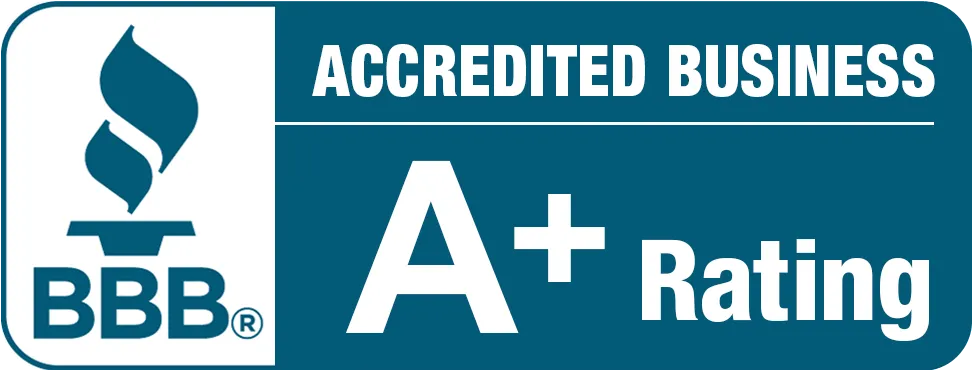Adams Heating & Cooling
HVAC Experts You Can Trust
Serving Tuscaloosa, AL, Birmingham, AL, and surrounding areas since 1982
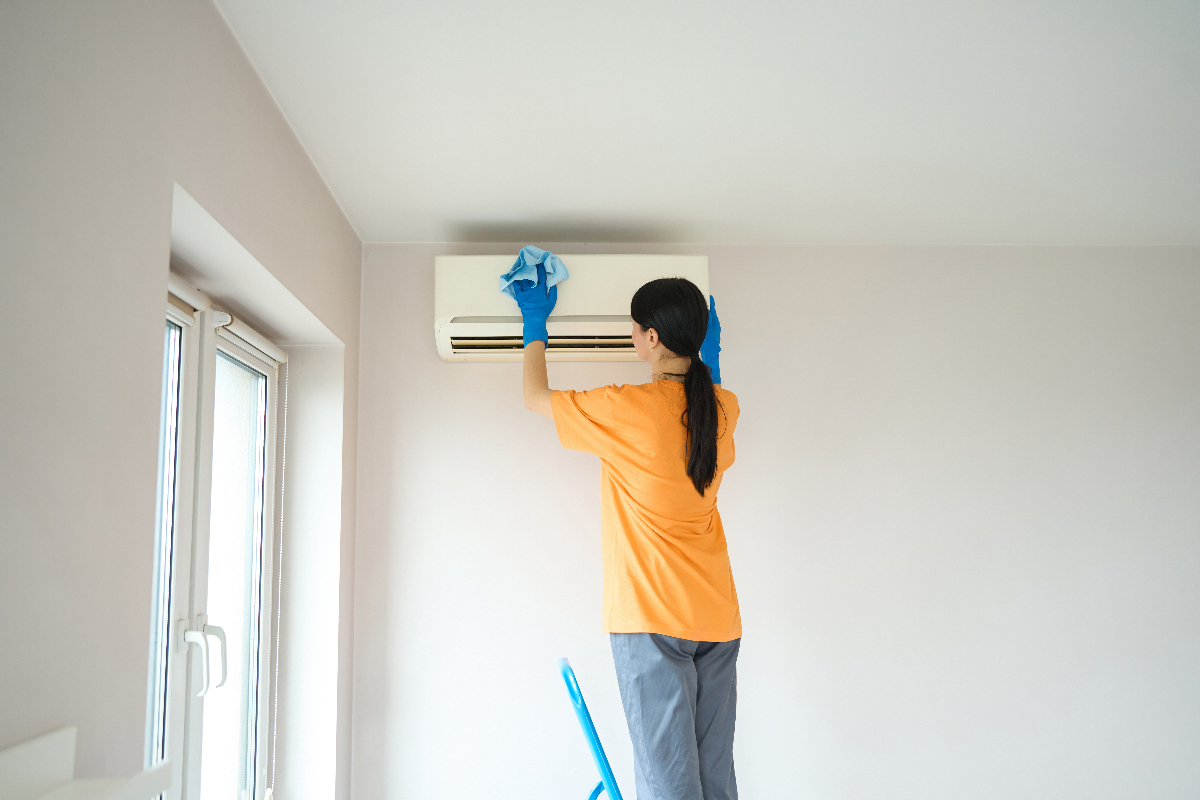
Spring Cleaning for Your AC: Essential Maintenance Tips
As the temperatures rise and spring transitions into summer, your air conditioning system becomes one of the most critical components of your home’s comfort. However, after months of inactivity, your AC may need some attention to ensure it runs efficiently and effectively when you need it most. Just like spring cleaning your home, your HVAC system requires seasonal maintenance to prevent breakdowns, improve energy efficiency, and extend its lifespan.
Neglecting AC maintenance can lead to higher energy bills, reduced cooling performance, and costly repairs. Dust and debris can accumulate in filters, coils, and vents, causing your system to work harder than necessary. Additionally, small issues left unaddressed can turn into major problems, leaving you without cooling when you need it most.
In this guide, we’ll walk you through essential AC maintenance tips to keep your system running smoothly all season long. Whether you’re a hands-on homeowner or prefer to leave maintenance to the professionals, these steps will help you maximize your system’s efficiency and indoor air quality. If you want expert assistance, Adams Heating and Cooling is here to help. Give us a call at 205-339-6540 to schedule a professional AC tune-up and ensure your home stays cool and comfortable all spring and summer long!
Replace or Clean Air Filters: The First Step to an Efficient AC System
Your air conditioning system’s air filter is one of the most essential yet often overlooked components of HVAC maintenance. It plays a crucial role in keeping your air clean, protecting your AC unit from damage, and improving energy efficiency. Over time, dust, pet dander, pollen, and other airborne particles accumulate in the filter, creating a thick barrier that restricts airflow.
When airflow is obstructed, several problems arise:
Your AC has to work harder. A clogged filter forces your system to push air through layers of dust and debris, leading to increased energy consumption and higher utility bills.
Your home’s air quality declines. Instead of trapping airborne contaminants, a dirty filter allows them to circulate back into your home, triggering allergies, asthma, and other respiratory issues.
Your AC components experience more wear and tear. Poor airflow can cause overheating, frozen coils, and compressor failure, leading to expensive repairs or even system replacement.
How Often Should You Replace or Clean Your Air Filter?
The frequency of filter changes depends on several factors, including the type of filter, household environment, and AC usage:
Basic fiberglass filters: These should be replaced every 30 days. They are inexpensive but not very effective at trapping small particles.
Pleated filters: These are more efficient and should be replaced every 60–90 days. If you have pets or allergies, replace them every 30–45 days.
HEPA or high-efficiency filters: These last longer but should still be checked every 2–3 months to ensure they’re not clogged.
Reusable filters: If your AC unit has a washable filter, clean it every month with mild soap and water. Make sure it is completely dry before reinstalling it to prevent mold growth.
Signs That Your Air Filter Needs Immediate Replacement:
Sometimes, you may need to change your filter sooner than expected. Here are a few warning signs:
✔ Visible dirt buildup: If your filter looks dark or clogged, it’s time for a replacement.
✔ Increased allergy symptoms: If you or your family members are sneezing, coughing, or experiencing itchy eyes, poor air filtration could be the cause.
✔ Uneven cooling: If certain rooms feel warmer than others, poor airflow from a clogged filter might be the reason.
✔ Higher energy bills: A sudden spike in electricity usage could indicate that your AC is struggling due to poor airflow.
How to Change or Clean Your Air Filter:
Changing your AC filter is a quick and simple task that can greatly improve your system’s efficiency. Here’s how to do it:
Turn off your AC system before removing the filter to prevent unfiltered air from circulating.
Locate the filter compartment, which is usually found behind a return air vent, in the air handler, or inside the furnace.
Remove the old filter and check for excessive dirt and debris.
If using a disposable filter, replace it with a new one of the same size and type.
If using a reusable filter, wash it with warm, soapy water, rinse it thoroughly, and allow it to dry completely before reinstalling.
Ensure the filter is installed in the correct direction, following the airflow arrows on the frame.
Turn the system back on and enjoy cleaner, more efficient cooling!
Don’t Neglect Your Air Filter
A simple monthly check and routine filter replacement can make a significant difference in your AC’s performance, your indoor air quality, and your overall energy costs. This is one of the easiest and most effective steps homeowners can take to maintain their AC system without professional help.
Clean the Outdoor Unit (Condenser): Keep Your AC Running Efficiently
Your air conditioning system's outdoor unit (condenser) plays a critical role in keeping your home cool. It is responsible for releasing the heat that your AC removes from inside your home. However, because it is exposed to the elements, the condenser can quickly become clogged with dirt, leaves, grass clippings, and other debris, reducing its efficiency and causing unnecessary strain on your system.
A dirty condenser unit struggles to release heat properly, forcing your AC to work harder and use more energy. This can lead to higher electricity bills, poor cooling performance, and potential overheating issues. In extreme cases, excessive buildup can cause the system to shut down entirely. That’s why regular cleaning of the outdoor unit is essential to maintain optimal airflow and cooling efficiency.
How to Clean Your Outdoor AC Unit
Cleaning your AC’s condenser unit is a relatively simple process, but it must be done carefully to avoid damaging delicate components.
First, turn off the power to your air conditioner at the breaker box to ensure safety. Next, remove any large debris like leaves, twigs, or dirt that may have accumulated around the base of the unit. It’s a good idea to keep at least two feet of clearance around the unit to allow proper airflow.
Once the large debris is removed, carefully rinse the condenser coils and fins with a garden hose. It’s important to use low water pressure, as high-pressure sprays can bend the thin metal fins, reducing the unit’s efficiency. If dirt buildup is severe, a coil cleaning solution can be applied to dissolve grime before rinsing.
After cleaning the coils, check the metal fins on the condenser. These fins are responsible for directing airflow through the unit, but they can become bent or crushed over time. If necessary, use a fin comb to gently straighten them to restore proper airflow.
Finally, inspect the fan blades and internal components. If the fan blades appear dirty, use a damp cloth to carefully wipe them clean. Also, check for any loose or damaged parts that might require professional attention.
How Often Should You Clean Your Outdoor Unit?
It’s recommended to clean your AC’s condenser unit at least once a season, preferably in early spring before the cooling season begins. However, if you live in an area with high pollen levels, heavy foliage, or frequent storms, you may need to clean it more often to prevent excessive buildup.
The Importance of Regular Condenser Maintenance
Keeping your outdoor unit clean improves airflow, prevents overheating, and helps your system run more efficiently, ultimately reducing your energy costs. A well-maintained condenser can also extend the lifespan of your AC system, preventing unnecessary breakdowns and expensive repairs.
If your outdoor unit is extremely dirty or you’re unsure how to clean it properly, it’s best to call in a professional. Our team at Adams Heating and Cooling can provide a thorough inspection and cleaning, ensuring your system operates at peak performance all summer long.
Inspect and Clean Evaporator and Condenser Coils: Keep Your AC Running Smoothly
Your air conditioning system relies on two key sets of coils to function properly:
Evaporator Coils (Indoor Unit): These coils absorb heat and humidity from the air inside your home.
Condenser Coils (Outdoor Unit): These coils release the absorbed heat outside, allowing your AC system to maintain a comfortable indoor temperature.
Over time, both of these coils can become coated with dust, dirt, and grime, which reduces their ability to transfer heat efficiently. When this happens, your AC has to work much harder to cool your home, leading to higher energy consumption, uneven cooling, and potential system failures.
Why Dirty Coils Are a Big Problem
When evaporator and condenser coils are covered in dirt, they act as an insulating layer that prevents proper heat exchange. This can lead to:
✔ Reduced Cooling Efficiency: Your AC won’t cool your home as effectively, leaving some rooms feeling warmer than others.
✔ Higher Energy Bills: A system that struggles to cool properly will run longer, using more electricity.
✔ Frozen Coils: When the evaporator coil is clogged with dirt, it can cause ice buildup, leading to airflow blockages and system malfunctions.
✔ Compressor Damage: If heat transfer is restricted for too long, the compressor can overheat, potentially leading to costly repairs or a full system breakdown.
How to Clean Your AC Coils
Cleaning your evaporator and condenser coils is an essential part of AC maintenance, but it requires a careful approach to avoid damage.
Turn Off the Power: Before handling any AC components, switch off the system at the breaker.
Access the Evaporator Coil: The evaporator coil is usually located inside the air handler or near the furnace. Remove the access panel to reach it.
Gently Brush Away Surface Dust: Use a soft brush or a vacuum with a brush attachment to remove loose dirt and debris.
Apply a Coil Cleaner: Use a non-corrosive coil cleaner spray (available at hardware stores) to break down stubborn grime. Let it sit for a few minutes before wiping away residue.
Rinse the Coils (if applicable): Some systems allow for a gentle water rinse, but be sure to follow manufacturer instructions to avoid damage.
For the condenser coils (outdoor unit), follow these additional steps:
✔ Remove debris from around the unit.
✔ Use a garden hose (low pressure) to rinse the coils.
✔ Straighten any bent fins with a fin comb to restore proper airflow.
When to Call a Professional
While homeowners can perform basic surface cleaning, deep coil maintenance should be done by an HVAC professional. A technician can:
✔ Use specialized tools and chemicals to remove deep-seated dirt.
✔ Inspect for leaks, corrosion, or coil damage that could lead to efficiency issues.
✔ Ensure the entire system is properly reassembled and running at peak performance.
How Often Should Coils Be Cleaned?
For optimal efficiency, coils should be inspected and cleaned at least once a year, ideally during a professional maintenance check. If your AC runs constantly or is exposed to high levels of dust and debris, more frequent cleanings may be necessary.
Protect Your AC System with Professional Maintenance
Regular coil cleaning improves cooling efficiency, lowers energy costs, and extends the lifespan of your AC unit. If you suspect your coils are dirty or you’re experiencing uneven cooling, it’s best to schedule a professional maintenance check.
Check Thermostat Settings
Your thermostat is the command center of your air conditioning system. It regulates temperature settings and controls how often your AC runs. If your thermostat is not calibrated correctly, outdated, or set inefficiently, it can lead to inconsistent temperatures, unnecessary energy use, and higher utility bills.
Why Your Thermostat Settings Matter
An incorrectly set or malfunctioning thermostat can cause:
✔ Frequent cycling (turning on and off too often), which strains your AC system and increases wear and tear.
✔ Uneven cooling in different rooms, making some areas too hot or too cold.
✔ Higher energy bills due to the system running longer than necessary.
✔ Increased system stress, leading to premature breakdowns.
How to Optimize Your Thermostat for Spring and Summer
Test the Accuracy of Your Thermostat
Place a separate room thermometer near your thermostat and compare the readings.
If the readings don’t match, your thermostat may need recalibration or replacement.
Set the Right Temperature for Energy Savings
The U.S. Department of Energy recommends setting your thermostat to 78°F (26°C) in the summer when you're home.
When you're away, raising the temperature by 7-10°F can save up to 10% on cooling costs.
Upgrade to a Programmable or Smart Thermostat
A programmable thermostat allows you to set schedules for cooling, adjusting temperatures automatically when you’re home, asleep, or away.
A smart thermostat offers even greater efficiency, allowing you to control settings remotely through a smartphone app. It can also learn your habits and adjust settings for optimal savings.
Check Battery Life (If Applicable)
If your thermostat runs on batteries, replace them at least once a year to prevent failures.
Ensure Proper Thermostat Placement
Thermostats should be installed away from heat sources, direct sunlight, and drafty areas to prevent false readings that can cause unnecessary cooling.
The Benefits of a Well-Functioning Thermostat
A properly set and maintained thermostat helps you maximize energy efficiency, maintain consistent comfort, and extend the life of your AC system. If your thermostat is outdated, unresponsive, or causing cooling issues, it may be time for an upgrade.
Examine Ductwork for Leaks and Blockages: Prevent Energy Waste
Your home’s ductwork plays a crucial role in distributing cool air throughout your space. If your ducts have leaks, gaps, or blockages, your AC system will work harder than necessary, leading to higher energy bills, poor airflow, and uneven cooling.
Why Duct Leaks Are a Problem
Even small leaks in your duct system can have a major impact on performance. According to the U.S. Department of Energy, up to 30% of cooled air is lost due to leaks and poor insulation in duct systems.
Common signs of ductwork issues include:
✔ Some rooms feel significantly warmer than others
✔ A noticeable decrease in airflow from vents
✔ Unexplained spikes in energy bills
✔ Excess dust accumulating around vents and in rooms
✔ Strange noises, like whistling or rattling, coming from ducts
How to Inspect and Maintain Your Ductwork
Perform a Visual Inspection
Look for visible holes, disconnected sections, or damaged insulation in exposed ductwork (such as in attics or basements).
If you see gaps or tears, they should be sealed immediately.
Check for Air Leaks
Run your hand along duct joints while the AC is running. If you feel air escaping, you likely have a leak.
You can also perform a smoke test by holding a lit incense stick near duct connections—if the smoke moves erratically, there’s an air leak.
Seal Leaks with Proper Materials
Small gaps can be sealed using HVAC aluminum foil tape.
Larger leaks should be sealed with mastic duct sealant, which is more durable.
Clean and Unblock Vents
Make sure furniture, rugs, or curtains aren’t obstructing airflow from supply and return vents.
Remove vent covers and vacuum out dust and debris to improve airflow and indoor air quality.
Schedule a Professional Duct Cleaning and Inspection
Over time, ducts accumulate dust, mold, pet dander, and allergens, which can reduce air quality.
A professional can thoroughly clean ducts, seal leaks, and ensure proper airflow throughout your home.
The Benefits of Well-Maintained Ductwork
✔ Increased Energy Efficiency: Less wasted air means lower utility bills.
✔ Improved Comfort: Even cooling throughout your home eliminates hot spots.
✔ Better Indoor Air Quality: Reduced allergens and dust mean healthier breathing conditions.
✔ Extended HVAC System Lifespan: Less strain on your AC results in fewer breakdowns and longer-lasting equipment.
Ensure Proper Refrigerant Levels: Keep Your AC Running at Peak Performance
Refrigerant is the lifeblood of your air conditioning system—it’s the chemical that allows your AC to absorb heat from inside your home and release it outdoors. Without the correct amount of refrigerant, your system won’t cool properly, will consume more energy, and could suffer costly damage over time.
Many homeowners assume that refrigerant naturally runs low over time, but in reality, your AC system is designed to be a closed-loop system. If refrigerant levels are dropping, it’s usually due to a leak, which requires immediate attention. Running your AC with low refrigerant levels can cause the compressor to overheat and fail, which is one of the most expensive components to replace.
Signs Your AC May Have Low Refrigerant
One of the most common symptoms of low refrigerant is poor cooling performance—your AC may run continuously but struggle to reach the desired temperature. You might notice that warm air is coming from your vents even though the system is on. Another sign is ice buildup on the refrigerant lines or evaporator coil, which happens when the system lacks enough refrigerant to absorb heat properly.
Higher-than-normal energy bills can also indicate a refrigerant issue. When the system has to work harder due to insufficient refrigerant, it runs longer and consumes more electricity. In some cases, you may hear hissing or bubbling noises coming from your AC unit, which can signal a refrigerant leak.
Why You Should Never Handle Refrigerant Yourself
Unlike changing an air filter or cleaning coils, refrigerant issues require professional attention. Handling refrigerant improperly is not only dangerous, but it is also illegal without the proper certification. AC refrigerant is a regulated substance, and technicians must have special training to safely handle it, locate leaks, and recharge the system to the correct level.
If you suspect your AC is low on refrigerant, a technician will:
Perform a system check to determine if refrigerant levels are indeed low.
Locate and repair leaks to prevent future refrigerant loss.
Recharge the system with the correct type and amount of refrigerant.
The Importance of Professional Refrigerant Maintenance
Keeping your AC’s refrigerant levels within the proper range ensures that your system cools effectively, operates efficiently, and lasts as long as possible. If left unaddressed, low refrigerant can lead to complete system failure, requiring costly repairs or even a full AC replacement.
Schedule a Professional Maintenance Check: Protect Your AC and Your Comfort
Your air conditioning system is one of the most valuable and hard-working appliances in your home. It runs for hours each day during warmer months, keeping your family cool and comfortable. However, like any mechanical system, your AC needs regular maintenance to operate efficiently and last as long as possible.
Many homeowners only call for service when something goes wrong, but this reactive approach can lead to higher repair costs, reduced energy efficiency, and even complete system failure at the worst possible time. Scheduling a professional AC maintenance check at least once a year is one of the best ways to prevent breakdowns, lower energy bills, and extend the life of your system.
Why Professional Maintenance is Essential
Even if your AC seems to be running fine, problems can develop behind the scenes. Small issues, like worn-out parts, dirty components, or refrigerant imbalances, can slowly reduce efficiency and lead to bigger problems over time. Regular tune-ups allow technicians to catch these minor issues before they become expensive repairs or cause your system to break down completely.
A professional AC maintenance check ensures:
✔ Maximum Cooling Efficiency: Your system will cool your home faster and more effectively, using less energy.
✔ Lower Energy Bills: A well-maintained AC doesn’t have to work as hard to maintain a comfortable temperature, which translates into lower monthly costs.
✔ Fewer Unexpected Repairs: Catching and fixing small issues early prevents them from turning into major breakdowns.
✔ Extended System Lifespan: AC units that receive routine maintenance last significantly longer than neglected systems.
✔ Warranty Protection: Many AC manufacturers require annual maintenance to keep warranties valid, which can save you money on future repairs.
What Happens During a Professional AC Maintenance Check?
When you schedule a maintenance visit with Adams Heating and Cooling, our expert technicians will perform a comprehensive inspection and tune-up to ensure your system is in top shape. This includes:
Inspecting and cleaning air filters to improve airflow and indoor air quality.
Checking refrigerant levels and addressing any leaks to keep your system cooling efficiently.
Cleaning evaporator and condenser coils to remove dirt and debris that could reduce cooling performance.
Testing the thermostat to ensure it’s properly calibrated for accurate temperature control.
Inspecting ductwork for leaks that could be wasting energy and affecting airflow.
Lubricating moving parts to reduce wear and tear on essential components.
Tightening electrical connections to prevent malfunctions or safety hazards.
Testing system startup and shutdown to ensure smooth operation.
The Impact of AC Maintenance on Energy Costs and System Reliability
One of the biggest advantages of routine AC maintenance is the significant reduction in energy costs. When your system is clean, well-tuned, and running efficiently, it doesn’t have to work as hard to maintain your desired indoor temperature. This means it uses less electricity, leading to lower monthly energy bills.
A well-maintained system also experiences fewer mechanical issues, reducing the likelihood of sudden breakdowns during the hottest days of the year. When an AC system isn’t serviced regularly, small issues—such as dirty coils, refrigerant leaks, or worn-out parts—can escalate into major failures that result in expensive repairs or even full system replacements.
By taking proactive maintenance steps, you’re not only saving money on energy bills but also avoiding the stress and inconvenience of unexpected AC failures. Regular maintenance keeps your home comfortable, reduces wear and tear on your system, and ensures that your AC unit lasts as long as possible.
Get Your AC Ready for Spring and Summer
As the weather warms up, now is the perfect time to get your air conditioning system in top shape. Regular AC maintenance helps to:
✔ Improve cooling efficiency, so your home stays comfortable even on the hottest days.
✔ Reduce energy consumption, leading to lower utility bills all summer long.
✔ Prevent costly breakdowns, avoiding the inconvenience of a malfunctioning AC during peak heat.
✔ Enhance indoor air quality, making your home a healthier place for you and your family.
✔ Extend the lifespan of your AC unit, delaying the need for expensive replacements.
Taking care of your AC now ensures that you’ll enjoy consistent, hassle-free cooling throughout the season. Whether it’s cleaning air filters, checking refrigerant levels, or inspecting your ductwork, each small maintenance task plays a vital role in keeping your system running at peak efficiency.
However, while some basic maintenance steps can be handled by homeowners, a professional tune-up is essential for catching hidden issues and ensuring your system is fully optimized.
Book Your Spring AC Maintenance Today!
Don’t wait until the summer heat arrives—schedule your AC maintenance today and enjoy peace of mind knowing your system is in perfect working condition.
At Adams Heating and Cooling, we are committed to providing top-quality, reliable HVAC services that keep your home comfortable and energy-efficient. Our expert technicians will thoroughly inspect, clean, and optimize your AC system, ensuring it runs smoothly all season long.
📞 Call us now at 205-339-6540 to schedule your professional AC maintenance!
Let us help you stay cool, save money, and avoid unexpected breakdowns this summer. Trust Adams Heating and Cooling to keep your home comfortable—because your comfort is our priority!

Tired of seeing those sky-high electric bills?
It's time to take control of your energy costs, and your HVAC system is a great place to start!
No more sweating over those monthly expenses!
Grab our FREE checklist to discover simple, yet effective, ways to lower your energy consumption and save money on your electric bill.
Inside this handy guide, you'll find:
Easy-to-follow tips to optimize your HVAC system's efficiency.
Common energy-wasting mistakes to avoid.
Actionable steps to make a real difference in your energy usage.
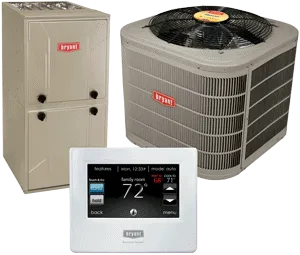
Free Estimates on Complete System Replacement
Call Now 205-339-6540
Office: 3415 Hargrove Road East,
Tuscaloosa, AL 35405
Office: 1236 Blue Ridge Blvd, Suite 111, Hoover, AL 35226
Call 205-339-6540
Call 205-606-4222
Email: [email protected]
